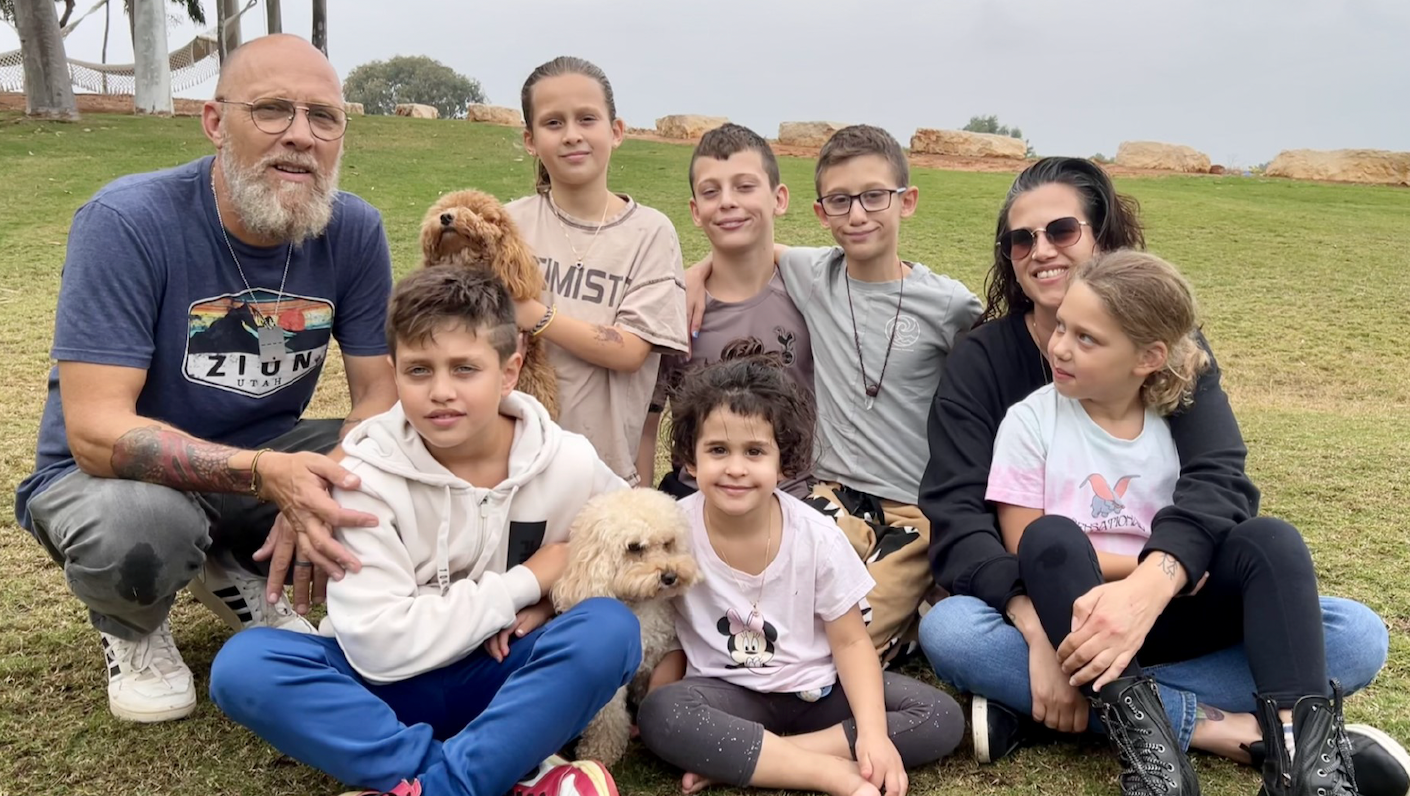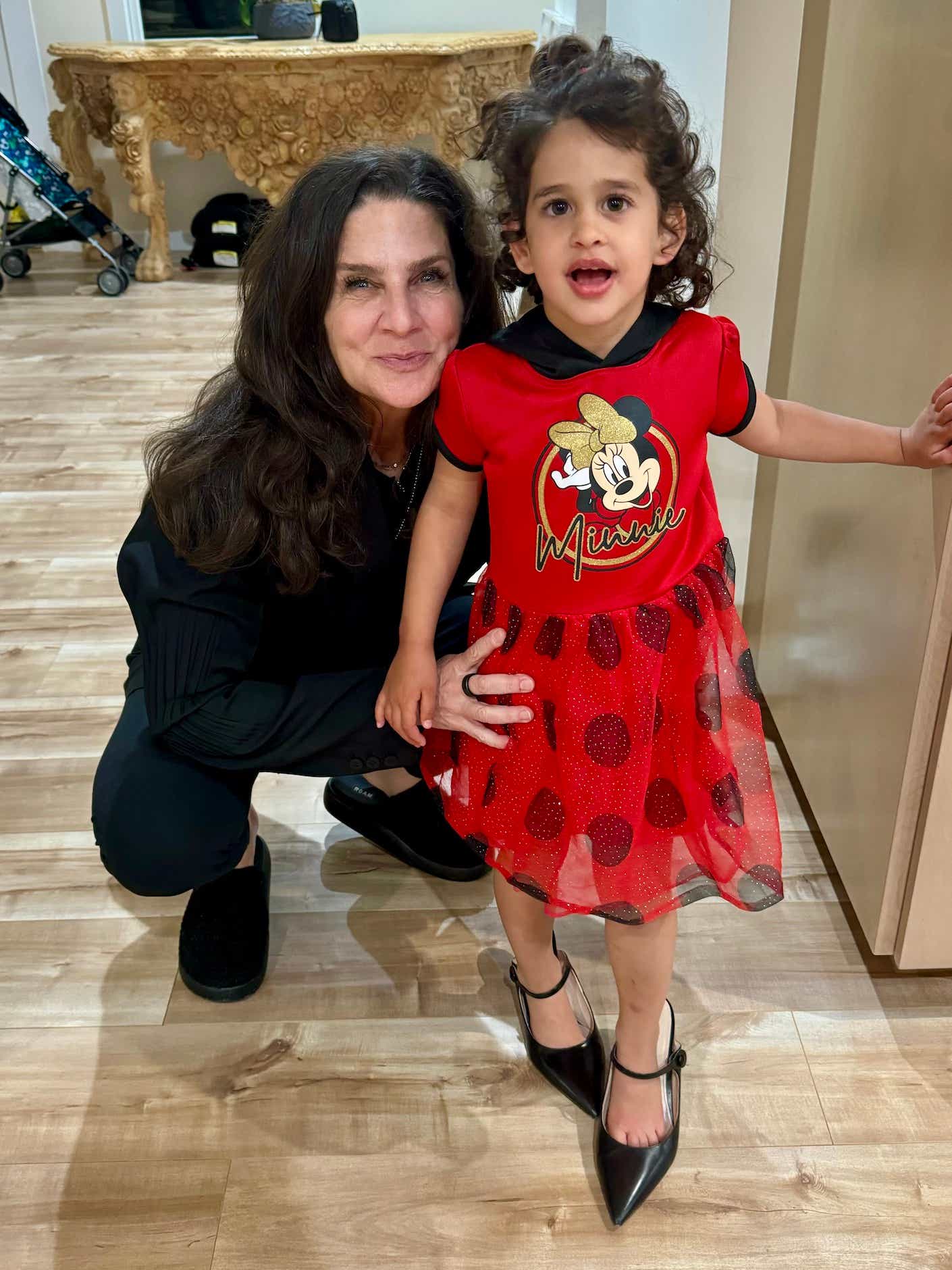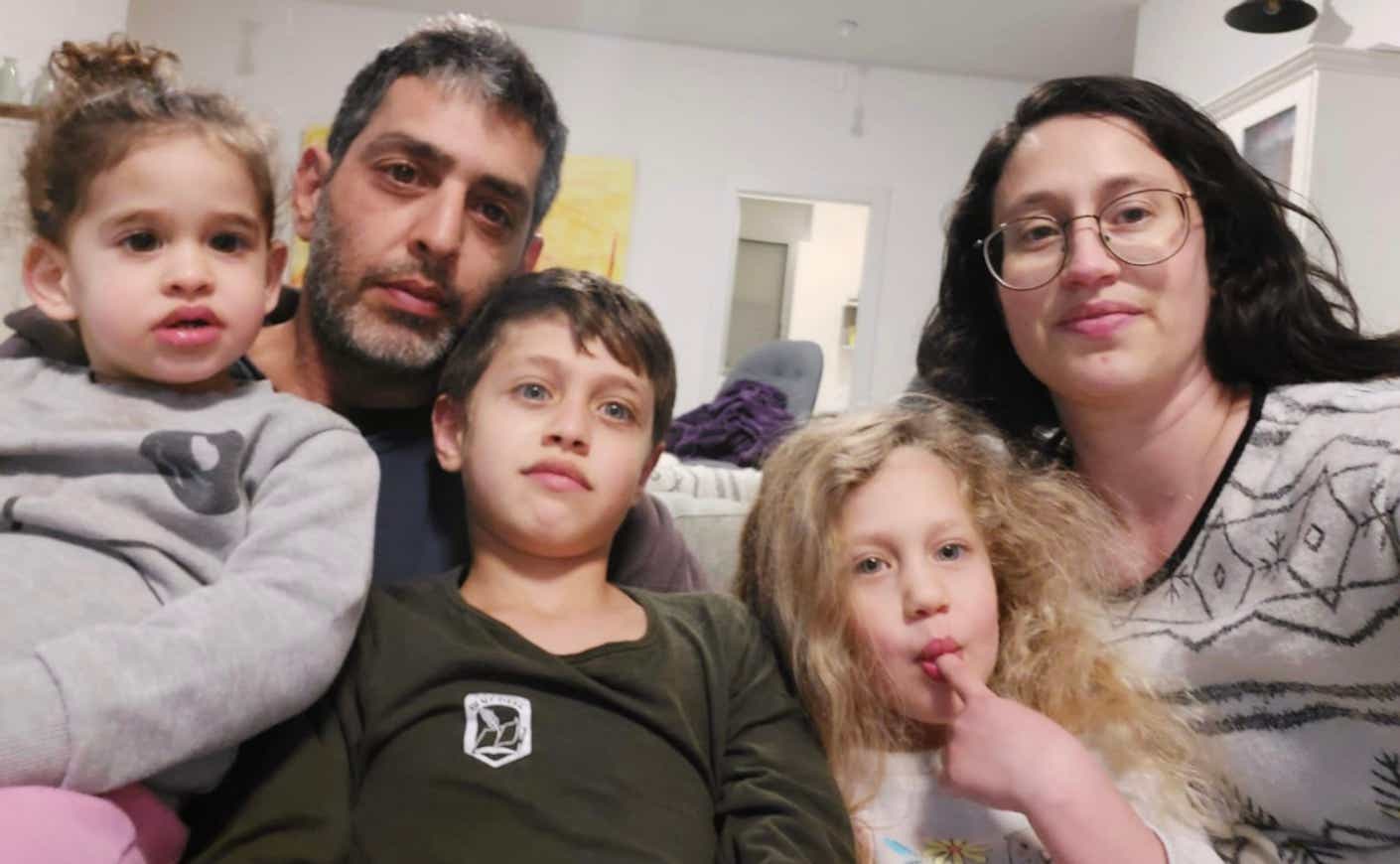On October 7, 2023, Hamas slaughtered 1,200 men, women, and children, and 246 innocent people were dragged across the border into Gaza against their will. Among them was three-year-old Abigail Mor Edan, whose border community was ransacked by fighters going from house to house, killing, raping, and abducting civilians from their homes. Abigail’s mother and father were murdered in front of their three children, and Abigail — the youngest — was abducted while her siblings hid in a closet.
Upon learning the tragic news, Abigail’s great aunt, Liz Hirsh Naftali, made it her mission to bring Abigail home. Abigail was released after 51 days and was reunited with her older siblings and other family members in Israel. Hirsh Naftali recounts the journey to rescue Abigail in her new book Saving Abigail: The True Story of the Abduction and Rescue of a Three-Year-Old Hostage. In the following excerpt, she reveals what Abigail’s two siblings, Michael and Amalia, went through while awaiting rescue during the attacks.
Smadar and her family lived in a new neighborhood in Kfar Aza — from their front door, you could see through a sophisticated-looking security fence to the boxy concrete fringes of the Gaza City sprawl, just three-quarters of a mile in the distance. It was impossible to live in Kfar Aza while remaining totally naïve about the risks of doing so. The same could be said for all of Israel: the dangers were evident, and well beyond what citizens of any Western nations would remotely accept as normal. At the same time, for Israelis, they seemed manageable. Most days were quiet, and Israel was home — the only home Israelis had. Despite the rocket attacks and the occasional military conflicts with Hamas that followed, most of which lasted a few weeks, the people of Kfar Aza did not consider the Gazans their enemies. The kibbutzim around the Gaza Strip were populated with people who believed in coexistence with the Palestinians: They voted overwhelmingly for secular, pro-peace parties and welcomed Gazan workers into their communities every day. The kibbutzniks would often volunteer to drive Gazans to hospital appointments in Israel. They could not ignore the dangers of their surroundings, though. More than once, Smadar grabbed the kids and drove to her in-laws’ home further north when she had suspicions that a bigger-than-usual attack could be coming from Gaza.

Like the rest of Israel on Oct. 6 — including the country’s military, intelligence, and political leaders — she went to bed at night believing that nothing out of the ordinary was happening.
Hamas attacked Israel in overwhelming numbers early in the morning on October 7, 2023, with an estimated force of three thousand terrorists breaching Israel’s borders by land, sea, and air. Commandos from the group’s elite Nukhba Force arrived at Kfar Aza in pickup trucks and landed near the center of the village using fan-powered paragliders. They smashed through an apparently worthless border fence with trucks, tractors, and construction equipment and crossed the fields on foot. In total, an estimated 200 to 300 terrorists overran a place in which perhaps 650 people were physically present. Most of Kfar Aza’s residents were asleep when the assault started. The active first line of the Kfar Aza volunteer security force totaled about 15 people, most of whom were unarmed. The close connection between Kfar Aza and Palestinians in Gaza meant that Hamas was already well acquainted with the layout of the village and its security operations. The invaders knew where the kibbutz armory was, and they killed several volunteers as they darted to retrieve their weapons. By mid-morning, one in every ten residents in Kfar Aza would be dead or in terrorist captivity.
Smadar and her husband Roee, along with their children — nine-year-old Michael, six-year-old Amalia, and three-year-old Abigail — lived on the corner of the kibbutz that was closest to Gaza. People in Kfar Aza live so close to the Strip that they see and hear rocket fire long before any sirens go off. A little after 6:25 a.m., Roee grabbed his camera and went outside, not yet knowing that terrorists were invading his own community. His photos of the beginning of the bombardment — terrorists hang-gliding into the kibbutz; and thousands of rockets, missiles, and mortars fired from Gaza, all part of the largest such single-day assault against Israel in the country’s history — were later published on the website of Israel’s largest newspaper, Yediot Ahronot. By 6:30 a.m., the entire family was awake. Meanwhile, the trained Hamas commandos had begun methodically fanning out across the kibbutz, going house by house and killing or kidnapping whomever they could find. Hamas terrorists barged into the house while Roee was still out photographing the rocket attack. They were wearing fake olive-green IDF uniforms, made in a Hamas-controlled factory in Gaza City. Smadar was among the first in Kfar Aza to die. She was shot in front of her three small children as she rushed to secure them in their reinforced safe room.
It is impossible to imagine what it was like for Michael, Amalia, and Abigail to see their mother murdered in front of them in the middle of their home, especially with their own lives in danger, with bullets flying all around and killers closing in. The three children rushed out the door. As they left the house, they saw their father running toward them. He had heard the direction of the gunshots. Roee grabbed Abigail in his arms. Michael and Amalia darted beside him. Shots rang out. The children watched as their father fell to the ground on top of their baby sister. The terrorist who killed Roee looked Michael and Amalia in the eye, and in the unthinkable terror of the moment, the children ran toward the greatest safety they knew. They sprinted home, climbed over their mother’s dead body, piled into a closet, and hid there in the dark, alone.
Michael and Amalia called their grandmother from the darkness of their closet to tell her what they had seen. When they reached her in Bulgaria, she didn’t believe them at first. She needed proof before she could start processing the fact that they now lived in a world where her daughter had been murdered: She asked the children to leave their closet for a moment and show her their mother’s body on video. They gave their despondent grandmother the grim certainty she said she needed during the worst moment of her long life. They also told her that their father was shot dead, and that they thought Abigail was too.

Back in the closet, a chain of anguished phone calls to friends and family eventually led Michael and Amalia to a social worker who lived in the north of Israel. For hours, this person went to heroic efforts to keep the children company on the phone, to calm them down and serve as a lifeline to a steadier world. From the dark closet, Michael asked this woman who they would live with, as he knew his parents were dead. She assured them that everyone would want to take care of them because they were smart, beautiful children. At one point, the children’s phone was nearly out of battery, and the therapist had a hard decision to make: Was it worth one of the children risking their life to leave the closet and retrieve a charger? Was it worth the price of making them see their mother’s body again? She decided that hours of agitation, loneliness, and fear, along with an inability to communicate with the outside world, were much more dangerous to Michael and Amalia than spending a few quick moments outside their hiding place. She was scared of what would happen if she lost touch with these children. Michael quickly, bravely fetched a charger and returned to the cramped darkness. Help wasn’t on the way yet. It wouldn’t be for a while. The Israeli army and police were so overwhelmed, and caught so off guard by the assault, that it would be 14 hours until Israeli special forces made it to Kfar Aza and found the children in their closet. They were confused, terrified, and shattered — but physically unharmed and alive.
Excerpted from Saving Abigail: The True Story of the Abduction and Rescue of a Three-Year-Old Hostage, Post Hill Press 2024.









